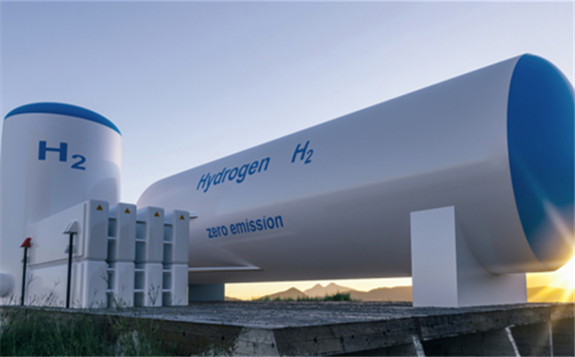Nuclear energy will be the most cost-effective means of producing clean hydrogen when natural gas prices are well above the generally low levels seen over the last decade, according to a new IAEA study that underscored the importance of having a diverse mix of low-carbon sources for a successful clean energy transition.

Using the IAEA’s new FRAmework for the Modelling of Energy Systems (FRAMES), the study found that as gas prices increase, the optimal mix of technologies for producing low-carbon hydrogen shifts in favor of nuclear and renewable energy and away from natural gas with or without carbon capture and storage. While the study focused on a particular country, its results can be generally applied to other energy markets.
“This shift happens at natural gas costs that are substantially lower – around $10-$15 per million British thermal units – than those observed in recent days in the European Union, United Kingdom and parts of Asia,” said Francesco Ganda, an IAEA nuclear engineer who conducted the study, referring to recent record high spot prices in these markets of between $35 and $40 per million British thermal units, a globally used measure for the energy content of natural gas.
The FRAMES study comes ahead of next month’s UN Climate Change Conference, where the IAEA will hold several events to underscore nuclear energy’s contribution to achieving the goals of the Paris Agreement and Agenda 2030 for Sustainable Development. Clean hydrogen is increasingly seen as having a key role in the clean energy transition as part of a reliable low-carbon energy mix.
As a baseline reference for the average natural gas price, the FRAMES study used $6 per million British thermal units, which was the approximate price in markets such as Europe as recently as last spring before the recent price surge. That was also the price used in a recent URENCO/Aurora study of the United Kingdom market in the year 2050, “Decarbonising Hydrogen in a Net Zero Economy”, which showed that nuclear energy partnered with renewables can lower the overall system costs of hydrogen production.
Hydrogen is the most abundant element in the universe but producing it in pure form for industrial processes – ranging from producing synthetic fuels and petrochemicals to manufacturing semiconductors and powering fuel cell electric vehicles – is energy intensive and currently done almost entirely by using fossil fuels, mostly natural gas, in equipment called steam methane reformers. To reduce the environmental impact of the 90 million tonnes of hydrogen that is produced annually, and with an eye to further scaling up production to meet climate goals, several countries are looking to nuclear processes to generate low-carbon hydrogen on a massive and cost-competitive scale.
When natural gas prices rise above $20 per million British thermal units, the FRAMES study showed that the optimal method of hydrogen production becomes a mix of electrolysis-produced hydrogen from electricity supplied by a combination of renewables and conventional nuclear power plants and thermal processes that can eventually be supplied by advanced high temperature nuclear reactors (HTRs).
International interest in HTRs is increasing as they are expected to provide cost-effective electricity as well as high-temperature heat for industrial applications. HTRs, which were pioneered in Germany in the 1970s, are now under development in several countries, with significant progress being made in Japan and China recently starting up its first HTR unit in Shandong province. China plans to eventually deploy several more HTRs at that site and in other provinces to combine the generation of power and process heat for industry and other applications, including hydrogen production.
FRAMES is currently being used for internal IAEA analyses of integrated energy systems. It provides quantitative analyses on nuclear power’s potential benefits to present and future electricity systems, which is of particular interest for countries pursuing or considering nuclear power as part of their solution to meet net zero goals.